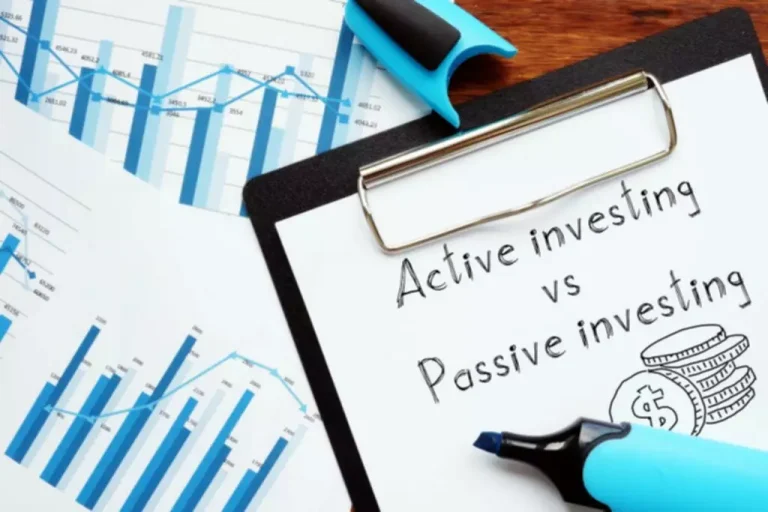Authorized participants enhance market transparency by bringing ETF prices closer to their web asset worth. When traders purchase ETFs, they essentially want to wager on a selected asset class. ETF patrons on the stock market naturally want their stock costs to go up. However, some long-term worth buyers favor closed-end funds just because they have the opportunity to search out vital reductions.

A sector exchange-traded fund (ETF) invests in a given trade or sector’s stocks and shares, normally listed within the fund title. A sector ETF, for example, can follow a benchmark index for vitality shares or stocks of know-how. Nifty is a stock index that includes firms from quite so much of industries, including banking and finance, know-how, pharmaceuticals, vehicles, oil and gas, and much more. As a outcome, investing in an ETF that tracks the Nifty naturally diversifies an investor’s portfolio.
Iifl Securities Buyer Care Quantity
If one party ceases to act as a certified participant, the others will contemplate the ETF a profitable alternative and offer to create or redeem the shares. At the identical time, affected licensed individuals have the selection to resolve inner issues and resume major market actions. The main advantage of APs for buyers is they carry the price of ETFs nearer to the online asset value of the underlying safety. Without them available in the market, ETFs are typically like closed-end funds. In such a scenario, ETF costs can deviate considerably from their web asset worth, with important ups or downs.
For taxation purposes, gold ETFs and worldwide ETFs are taxed as non-equity funds. Short phrases features made on ETF models held for a period of less than 36 months are taxed as per the applicable earnings tax slab price. Long-term capital gains on units held for over one yr are taxed at 20% after indexation profit. Dividends earned by the ETF investor benefit from the tax exemption from the exchange-traded funds’ schemes.
Selecting one of the best ETF in India isn’t a one-size-fits-all method. The optimum choice is dependent upon your funding objectives and risk tolerance. Consider components similar to tracking error, expense ratio, liquidity, and historic performance, earlier than selecting an ETF on your https://www.xcritical.in/ portfolio. Liquid exchange-traded funds (ETFs) are a good way of investment to park cash in the market. Since these funds don’t have to pay a securities transaction tax, the transaction price is affordable (STT). Hence, not like energetic mutual funds, there isn’t a scope for Fund Managers to take any energetic investment name.
For instance, by investing in Nippon India Nifty one hundred ETF, you get publicity to one hundred companies comprising the Nifty one hundred index via a single funding. Mutual Fund investments are topic to market dangers, learn all scheme related documents rigorously. Investments in the securities market are subject to market danger; learn all of the related paperwork carefully before investing. Ensure to cover the worth of the shares, & commission fees if any. If a mean ETF carries an expense ratio of zero.30%, which suggests the fund will price you ₹3 in annual fees for every ₹ 1,000 you invest. Due to the distinctive in-kind creation / redemption means of ETFs, the liquidity of an ETF is actually the liquidity of the underlying shares.
6 Difference Between Etf’s & Index Funds
This deviation in efficiency is nothing but the “tracking error” and is expressed in percentage terms. How nicely an index fund manages its inflows and outflows also determines monitoring error. The decrease the monitoring error, the better the ETF / Index fund. ETF investments are clear & straightforward to grasp for even new traders. One can simply perceive which index the ETF is monitoring, and its value in real-time, akin to shares.

If the market is brief on ETF shares, permitted participants will make extra. Conversely, if the value of the ETF is decrease than the value of the underlying stock, the authorized individuals will cut back the issued ETF inventory. This could be achieved with a creation and redemption mechanism that matches the value of an ETF to its underlying Net Asset Value (NAV). An ETF is a marketable investment that tracks an index, commodity, bond, or asset portfolio, such as an index fund. Like mutual funds, an ETF is traded on a stock exchange like a common inventory.
Kinds Of Etfs
These are passively managed investments that track specific indices and invest in securities in the identical proportion because the underlying index. A liquid ETF, also called an Exchange Traded Fund, is a mutual fund whose units are traded on the inventory exchange. They put money into low-risk overnight securities corresponding to Collateralized Borrowing and Lending Obligations (CBLO), Repo and Reverse Repo. The index service supplier normally makes announcements of change properly upfront.
With some thinly traded Exchange Traded Funds, liquidity could be a priority. In such a case, you may not be able to promote any of your ETF items or may need to sell your units at a lower price. ETF investors need to bear in mind of the NAV, market value, and monitoring error whereas investing in ETFs. Before deciding on the ETF, you need to research the ETF by checking its historical performance, holdings, NAV or market worth, expense ratio, monitoring error, and so forth.
Advantages Of Trade Traded Fund
This is as a end result of Exchange Traded Funds are passively managed and require less buying and promoting of securities, which is known as having a low turnover. Buying and selling stocks involve prices like securities transaction prices, brokerages, and so on. An ETF will want to change the portfolio provided that adjustments to the underlying index don’t occur incessantly. Authorized participants are entities that may concern and redeem shares of exchange-traded funds. They provide much of the liquidity of the ETF market, by raising the underlying assets wanted to create ETF shares.
Market fluctuations and volatility in markets create risk to the fund. The sponsor might be assisted in establishing the fund and the participants obtain a block of shares for resale for profit. Authorized participants go on to obtain the same worth because the underlying securities in the fund, upon the sale of the shares.
Forms Of Exchange-traded Fund
Because they symbolize baskets of shares, ETFs usually trade at much larger volumes than individual shares. High buying and selling volumes mean high liquidity, enabling investors to get into and out of funding positions with minimal threat and expense. ETFs, or Exchange-Traded Funds, are index funds that commerce on stock markets.
- It offers publicity to fixed-income instruments and generates earnings from interest payments.
- Our consultants counsel one of the best funds and you can get excessive returns by investing immediately or through SIP.
- As you require a demate account for stock trading, you require a demat account for investing in ETFs.
- A liquid ETF’s main objective is usually to supply an revenue commensurate with low danger while offering a excessive degree of liquidity.
- Mutual Fund investments are subject to market dangers, read all scheme related paperwork carefully.
An authorized participant is answerable for acquiring the securities that the ETF will hold. For the S&P 500 index, all its components (weighted by market capitalization) are bought and delivered to the sponsor. In return, APs will receive a bundle of shares of equal value, known as a creation unit. Issuers might interact in the companies of one or more APs for a fund. Large and energetic funds tend to have a bigger variety of authorized members. However, the variety of members additionally is dependent upon the kind of fund.

It is important to note that small traders can not turn out to be Aps. Exchange-traded funds (ETFs) have grown quickly in each — measurement and scope — during the last decade. Global assets beneath management increased from $675 billion in 2008 to $8.4 trillion within the first quarter of 2021. ETFs mix the range of a diversified portfolio with the simplicity of buying and selling a single inventory. Investors can purchase ETF shares on margin, brief promote shares, or hold for the lengthy run. ETFs could be bought / sold simply like another stock on the change via terminals throughout the country.
Selecting the best ETF is a vital step within the investment course of. ETFs cover a variety of asset courses, together with shares, bonds, commodities, and more. You should consider your investment targets, risk tolerance, and time horizon earlier than deciding on the ETF. Generally, the stocks underlying the ETF decide the danger of the fund. Risk is decreased because of presence of enormous variety of stocks within the basket. However, if the underlying shares are small cap or mid cap there might be larger quantity of danger.
